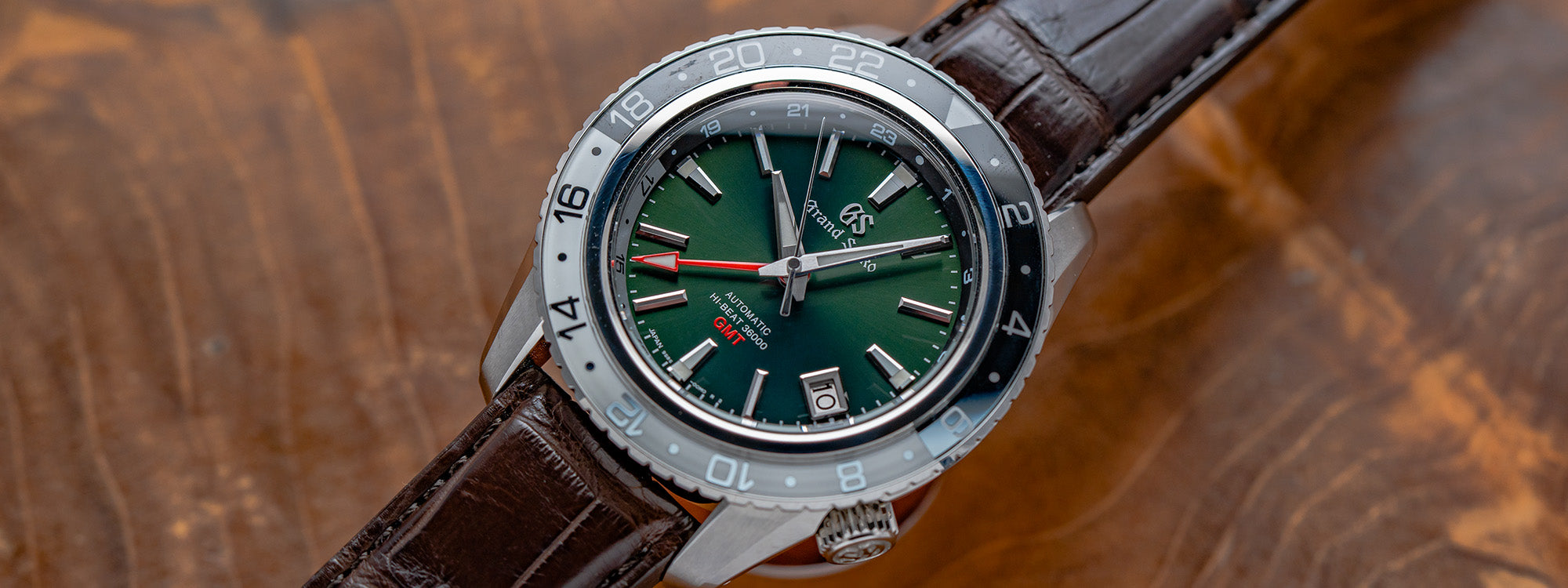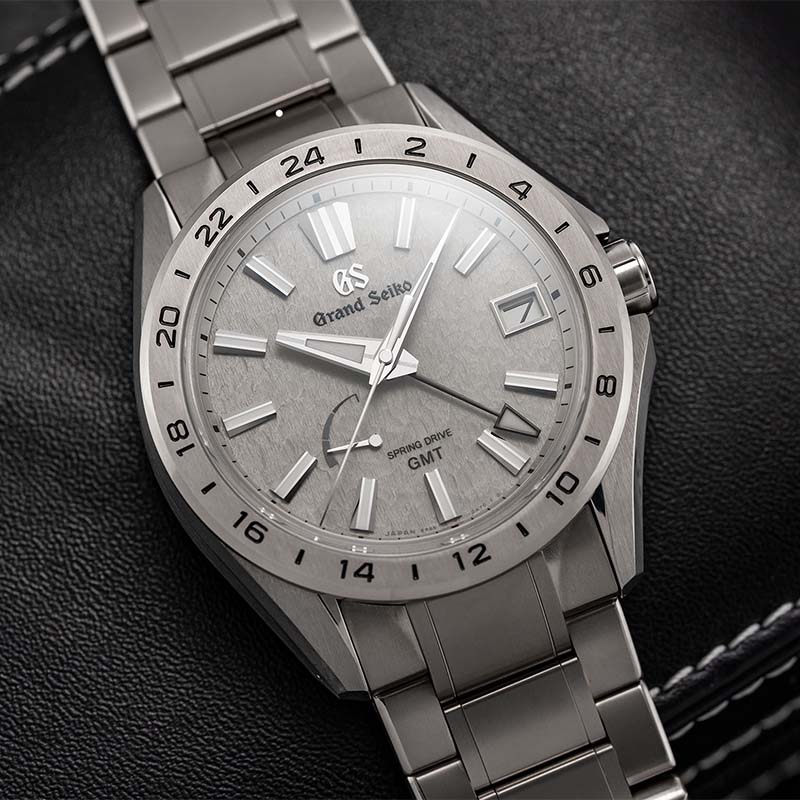After a relatively short time in the international market — and an even shorter time as a truly independent brand rather than an elevated product family — Grand Seiko has indisputably come into its own as a top-tier luxury watchmaker. Despite the inescapable fact that it still shares ownership and an industrial base with the parent Seiko brand, Grand Seiko has successfully put distance between its high-end output and Seiko’s more accessible, mass-market offerings. In fact, one could argue that enthusiasts and collectors have largely pigeonholed Grand Seiko as the luxurious, elegant dress watch brand and “Regular” Seiko as the sports- and tool-watch brand. But this perception would not be entirely accurate.

Grand Seiko makes its own fair share of sporty timepieces with robustly built cases, less-than-modest case dimensions, and practical functions and complications, despite packaging all of these attributes into timepieces that are distinctly more luxurious — and accordingly more pricey — than their Seiko counterparts. Most of these watches fall within the aptly named Sport collection, which made its official debut in 2017, the same year that Grand Seiko established itself as its own brand.
The roots of the Sport family DNA reach back significantly further — starting in 1998, with the launch of the Caliber 9S5 inside the first automatic Grand Seiko in more than 20 years, and continuing through the introduction of the first Grand Seiko model with a GMT function in 2002, the first Spring Drive-equipped Grand Seiko in 2004, and the dawn of a new series of automatic calibers with three-day power reserves in 2006. These and other, even earlier watches, including now-classic Seiko dive watches born in the mid-20th Century, have all contributed to the aesthetic and technical aspects that set these models apart from their dressier siblings. In this feature I will explore the subfamilies and categories within the Grand Seiko Sport collection and highlight some of the most intriguing and desirable models for collectors and enthusiasts.
Tokyo Lions
Since the very first model in 1960, Grand Seiko has used the symbolism of the lion, the king of the jungle, to denote the “inner strength” of its watches as well as their makers’ commitment to industry-leading excellence in all facets of production. The lion’s-head emblem has graced many a Grand Seiko caseback and now the imagery of the great jungle cat also finds expression in the collection’s most boldly angular case design, introduced in 2019. The cases measure a dominant 44.5mm in diameter and 16.8mm thick and sport claw-like lugs with a hairline finish that sets them apart from the other Zaratsu-polished surfaces. Grand Seiko uses these “Tokyo Lion” cases for some of the most complex models in the Sport family, notably those equipped with both a chronograph and a GMT function and powered by the brand’s Spring Drive Calibers. (I’ll be mentioning Spring Drive a lot in this article, so if you’re unfamiliar with it, you might want to read this.)

The most on-theme execution of the lion theme is the SBGC253, launched in 2023 and featuring the combo of Grand Seiko’s “high-intensity” titanium case and an ivory white dial with a swirling textural motif that calls to mind a lion’s mane. The 9R86 movement inside the 200-meter water-resistant case delivers a precision of +/- one second per day, and powers an array of functions whose displays are arranged in a cluster on the dial: a chronograph with 30-minute and 12-hour counters (at 2 and 4 o’clock, respectively); date in a faceted window at 3 o’clock; a central GMT hand that indicates an additional time zone on the 24-hour bezel; running seconds at 9 o’clock; and an analog power-reserve indicator at 7 o’clock.

In 2024, Grand Seiko introduced another visual feast of a dial on the SBG275 Spring Drive Chronograph GMT, a limited edition of 700 pieces. The dial’s brilliant shades of red and orange are sunrise-inspired, with brilliant shades of reds and oranges achieved in a special patented process called “Optical Multilayer Coating,” which involves a PVD treatment with several layers of nanoscale film. The result is a multidimensional effect in which the dial’s hues change depending on the angle of view. The inspiration, Grand Seiko says, was the colors of sunrise over the Hotaka mountain range in central Japan’s Shinshu province. This model’s case and bracelet are also forged from the proprietary “high intensity” titanium alloy, which has a more brilliant finish than that of most titaniums used in watchmaking, which often present as a more muted gray.
Divers' Watches
As most watch-history buffs are aware, Grand Seiko’s parent company, Seiko, is one of the most important names in the industry when it comes to the development of divers’ watches. Famous models like the “Tuna Can,” “Turtle,” “Samurai,” and “Monster,” to highlight just a few of the nicknamed models, continue to find avid fans, both as vintage collectibles and in their modern incarnations in Seiko’s Prospex sport-watch collection. All of these models’ collective design history exerted some influence on the first dedicated dive watches from Grand Seiko, which landed in 2017, at the dawn of both the Sport collection and of Grand Seiko as a stand-alone brand.

Grand Seiko went big with its first-ever mechanical divers (Ref. SBGH255 and SBGH257), both in terms of actual size and level of water resistance. The high-intensity cases spanned 46.9mm in diameter and 17mm in thickness, perhaps a necessary consequence of their extremely robust 600-meter depth rating. These watches were geared to saturation diving and featured a helium-release system that Seiko pioneered in some of its earliest diving models. The big, bold Lumibrite-coated hands and markers had their origins in classic Seiko divers’ models; the Caliber 9S85 inside is notable for its 55-hour power reserve and 36,000-vph frequency, which translates to 10 beats per second and thus an extraordinary accuracy of -3 to +5 seconds daily.

Right on the heels of these ‘extreme” divers came additional models with slightly more modest dimensions of 44.23mm wide and 14.12mm thick and more traditional water-resistance levels of 200 meters. These were also the first of Grand Seiko’s modern generation of dive watches to be outfitted with Spring Drive movements, namely the Caliber 9R65; one was offered in stainless steel with Zaratsu polishing (Ref. SBGA229), the other in high-intensity titanium (Ref. SBGA231). Quartz-powered models joined the family in 2019: the Ref. SBGX series, which contained the in-house Caliber 9F61, all sported stainless steel cases — at 43.6mm, the smallest of the dive models, while still maintaining a professional-level water resistance of 200 meters.

The lineup of Grand Seiko divers is still relatively small, but offers options with both the automatic, mechanical “Hi-Beat” Caliber 9S85 and with the Spring Drive Caliber 9R65 — two out of the three types of in-house movements that Grand Seiko makes, the other being quartz. The SBGH289 and SBGH291, respectively, have stainless steel and titanium cases and contain the Hi-Beat Automatic Caliber 9S85, while the SBGA461 and SBGA463, both with the Spring Drive Caliber 9R65, use the same metals.
Spring Drive Chronographs
Up until very recently — 2023, to be exact — Grand Seiko had not joined the elite ranks of watchmakers that produce their own in-house mechanical chronograph movement. That changed with the introduction of the Tentagraph, which somewhat curiously made its debut in the Evolution 9 collection rather than the Sport. While the Tentagraph is an accomplishment (and a story) all its own, the Spring Drive-powered chronographs that have long populated this collection are worthy of their own accolades. Outside the handful of models in the large, boldly styled “lion” cases noted above, Grand Seiko offers several such timepieces in a more conventional round case — downsized just slightly from their leonine siblings at 43.5mm in diameter and 16.2mm thick — albeit with the same busy, multifunction dial.

Featuring both chronograph and GMT functions, as well as power reserve and date display, these timepieces are among the most complicated in Grand Seiko’s portfolio and, perhaps suitably, this subfamily also has some of the most luxurious executions, like the SBGC244, a steel-case/steel-bracelet model that uses 18k rose gold for the crown, chronograph pushers, hands, and markers and a matching gold-toned bezel for the ceramic tachymeter insert. The Tentagraph movement eventually becoming installed into one of the Sport models would seem to be an inevitability, but for now, chronograph fans have several options within these Spring Drive-equipped timepieces.
GMTs - Dual Time and Triple Time
By far the most omnipresent complication in the Grand Seiko Sport collection is the ever-popular and always useful dual-time or GMT function. Accordingly, the Japanese maison offers a wide-ranging assortment of GMT models in several case executions and across all three types of its movement families: Hi-Beat automatic, quartz and Spring Drive.

At the highest level of technical execution are the brand’s “Triple Time Zone” GMTs, which are fitted with bidirectional 24-hour bezels with sapphire inserts, some with bicolor “night and day” colorways, others with a more monochrome aesthetic. In 2024, Grand Seiko added a new model with one of the brand’s now-famous nature-inspired motifs, the Ref. SBGJ277, nicknamed “Snowy Valley.” The watch’s 44.2mm stainless steel case is 14.8mm thick and water resistant to 200 meters, and contains the automatic Hi-Beat Caliber 9S86. Distinguishing the watch is its alluring bicolor execution: the 24-hour rotating GMT bezel, with a sapphire ring, delineates the nighttime hours in a forest green sector and daylight hours in a contrasting, bright white, while the dial has a finely molded visual motif with white and off-white shades blending into a snowy texture. The total package is meant to evoke the juxtaposition of snow and greenery found at high mountain elevations during Japan’s summer months. From a utility standpoint, the green-and-white bezel can be used, in conjunction with the central, green-painted arrow-tipped GMT hand, to read three time zones at once.

Other standouts among the Triple-Time-Zone GMT models inspired by Japan’s natural landmarks and weather patterns include the SBGE277, whose blackened, rock-pattern dial is designed to approximate the volcanic activity that formed the peaks and cliffs of Mount Hotaka and which is paired with a black-and-white bicolor GMT bezel. That watch contains the Spring Drive Caliber 9R66 and features the telltale arc-shaped power reserve indicator on the dial. The same automatic Hi-Beat Caliber 9S86 inside the “Snowy Valley” model animates another variation, the Ref. SBG237 (above), whose bicolor black-and-white day/night bezel and deep green dial, with high-contrast red GMT hand, aren’t evocative of any particular natural phenomenon but look very sharp nonetheless. Another Spring Drive-equipped “triple-time” GMT model, the Ref. SBGE255 (below), has a more modest 40.5mm steel case and a monochromatic blue “summertime” execution that Grand Seiko says takes inspiration from “hydrangea petals floating on water.”

Watch cognoscenti will inevitably compare these models, particularly the bicolor-bezel iterations, to the standard-bearer of the luxury GMT category, Rolex’s GMT-Master, but their meticulous finishing, impressive movement accuracy, and traditional Japanese inspiration elevates them into a desirable niche of their own within the Sport collection.

On the slightly less flashy (and more affordable) side are the GMT models that eschew the attention-grabbing, rotating bicolor bezels for a solid steel, stationary bezel and a more understated 39mm case. Inside these cases beats not an automatic or Spring Drive caliber but one of Grand Seiko’s dedicated, in-house quartz movements. ("Original” Seiko, of course, was the watch industry’s leading innovator of quartz, so the inclusion of such calibers even in the elite Grand Seiko brand is totally appropriate.) The SBGN027, introduced in 2022, is a quintessential example, with a hairline-brushed version of the company’s Zaratsu polished finish on the case and bracelet, engraved numerals on the fixed bezel, and a sunray-brushed black dial with Lumibrite-coated hands and a tilted date window at 4:30. The quartz Caliber 9F86 inside the case maintains timekeeping accuracy to +/- 10 seconds per year and offers three years of battery life. Because the bezel is fixed and does not rotate, the watches in this series can display a maximum of two time zones rather than three.

With Watches & Wonders on the horizon, it's fun to predict what Grand Seiko might be adding to the growing Sport collection in 2025 and in subsequent years. Time will tell (and we'll certainly be among the first to cover the new releases on this site), but the absence thus far of the previously mentioned Evolution 9 Tentagraph (above) from the Sport family is certainly notable. I have it on good authority from the brand that its first in-house automatic chronograph movement is most definitely considered a "sports watch" complication, so perhaps a migration from the more upscale Evolution 9 collection to the Sport collection is not out of the question.

















































0 Comments